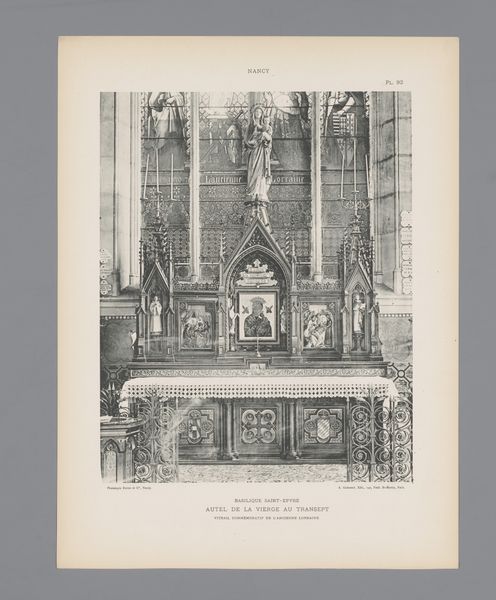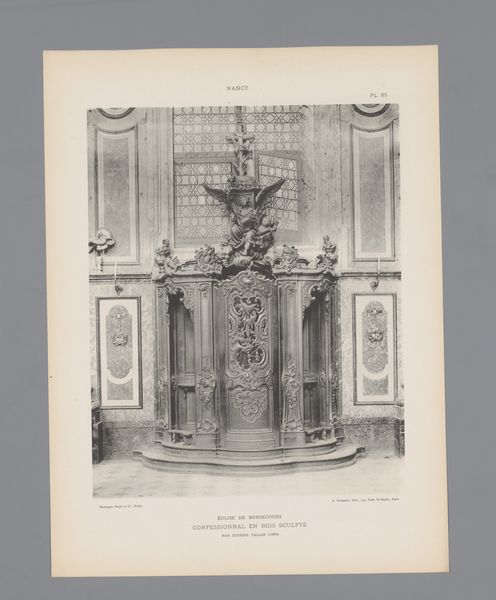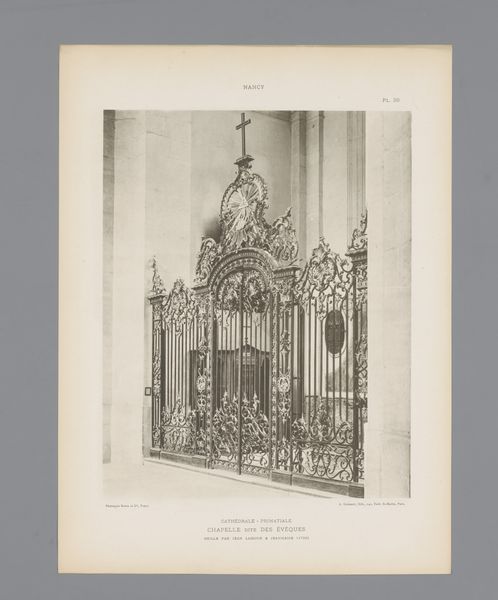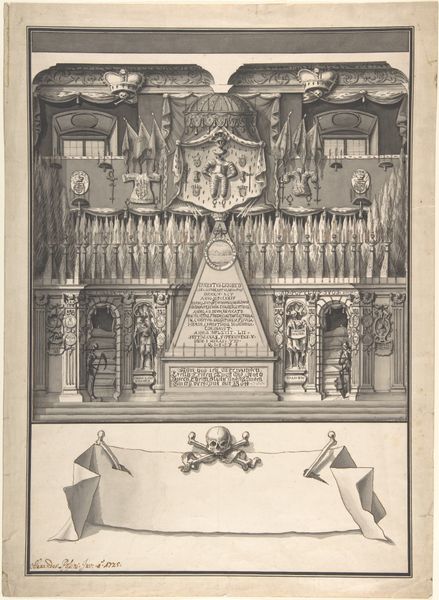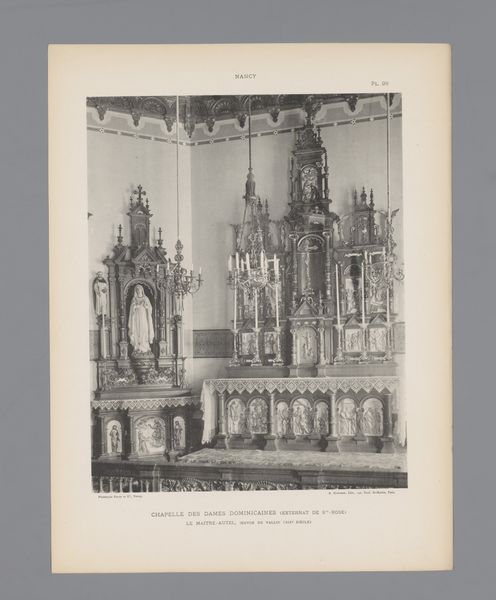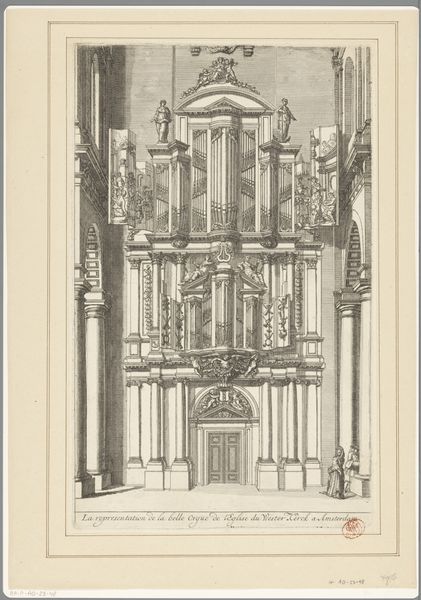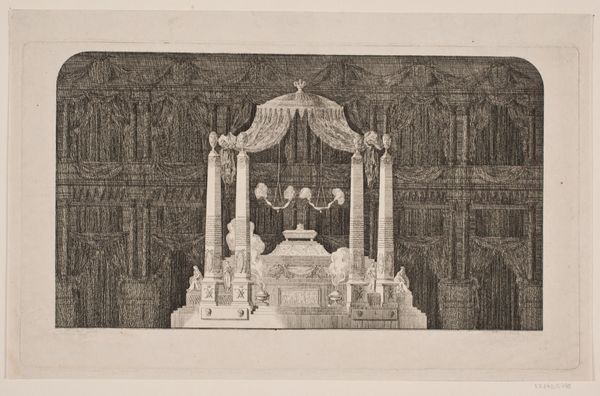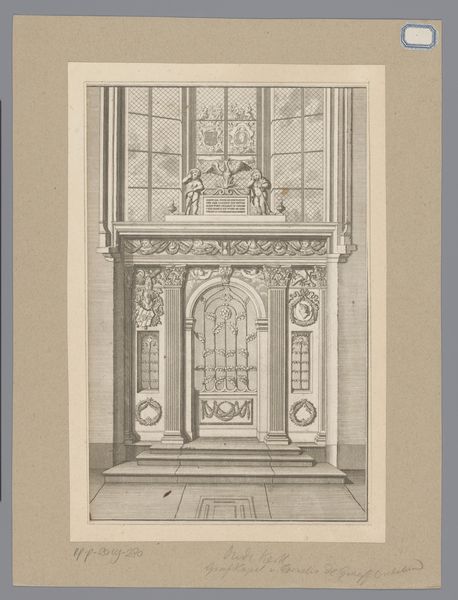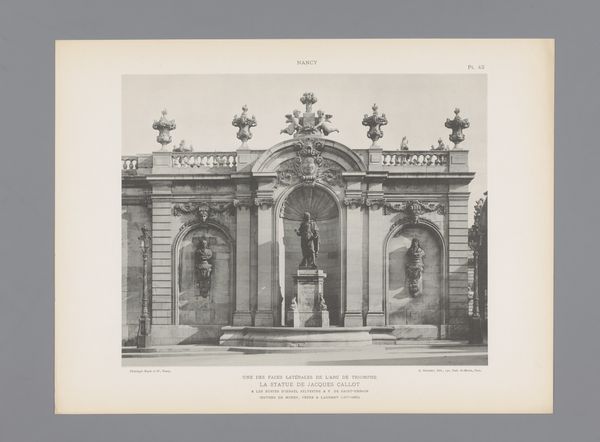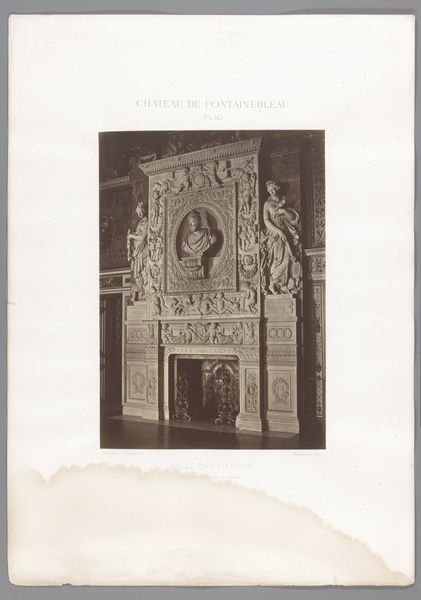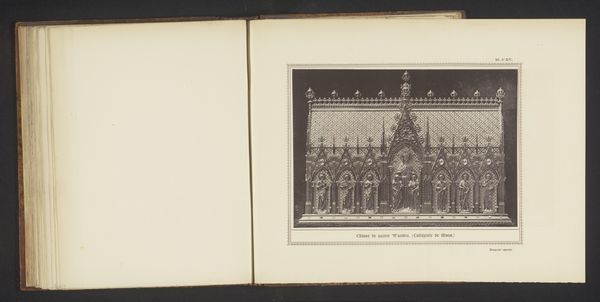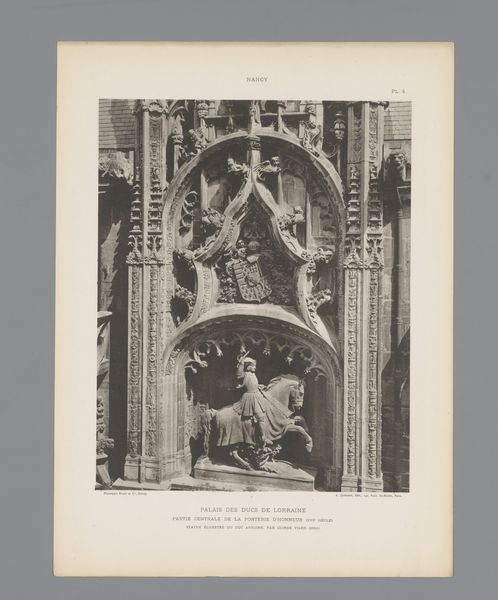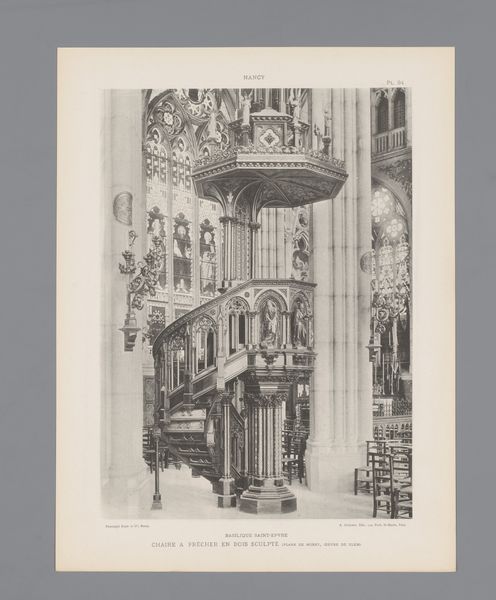
print, engraving, architecture
# print
#
engraving
#
architecture
Dimensions: height 298 mm, width 401 mm
Copyright: Rijks Museum: Open Domain
Curator: Here we have an engraving entitled “Doopkapel in de Basilique Saint-Epvre te Nancy,” which translates to “Baptismal Chapel in the Basilica of Saint-Epvre in Nancy." It dates from before 1896. Editor: Okay, my first impression? It’s ornate, very deliberate, like a stage set for some kind of serious ritual. Kind of makes you want to genuflect! Curator: Well, let’s consider the context. The Basilique Saint-Epvre in Nancy underwent significant renovations in the late 19th century. This engraving likely served as documentation or even promotion of those architectural changes, situating it within a broader narrative of religious revival and civic pride in the Lorraine region. Editor: True, it’s definitely got that imposing "look at what we’ve achieved" vibe. But I wonder, who was this really for? Was it a celebration of the church itself or of the architects, builders, and funders who restored it? It's got that 'trophy' quality. Curator: A fair point. There are potential class dimensions here. Such architectural depictions could reinforce hierarchical structures, showcasing the power and prestige associated with religious institutions. Access to such imagery might have also been limited, circulating mainly within elite circles. Editor: I see what you mean. But from a purely aesthetic point, it's kinda mesmerizing, isn’t it? That wrought iron grillwork, the repetition, the almost mathematical symmetry. The balance! It is so meticulously captured. There is something weirdly captivating in that extreme order. Curator: Yes, the engraving technique itself speaks to a meticulous process and values of precision. Consider its function in disseminating visual information: it democratizes the visual experience of these physical structures beyond the actual space. However, it can flatten the complexity and experience that one feels by seeing it in person. Editor: That makes sense. I’m stuck thinking how very un-messy it is. Like, life isn't orderly or predictable, but religious spaces often try to enforce that sense of control. Food for thought! Curator: Precisely. Reflecting on it all, what we initially read as simple image contains so much, revealing complex relationships between art, power, and social memory. Editor: Definitely gives a lot to think about beyond just pretty pictures.
Comments
No comments
Be the first to comment and join the conversation on the ultimate creative platform.
